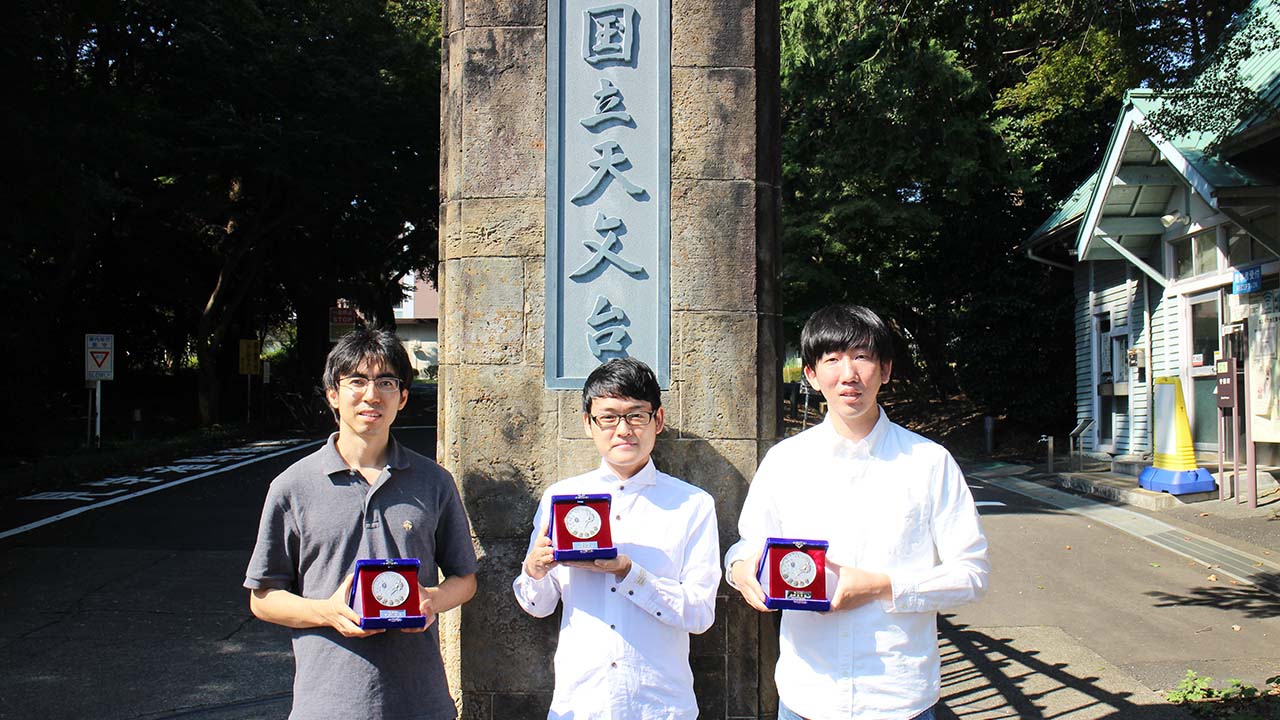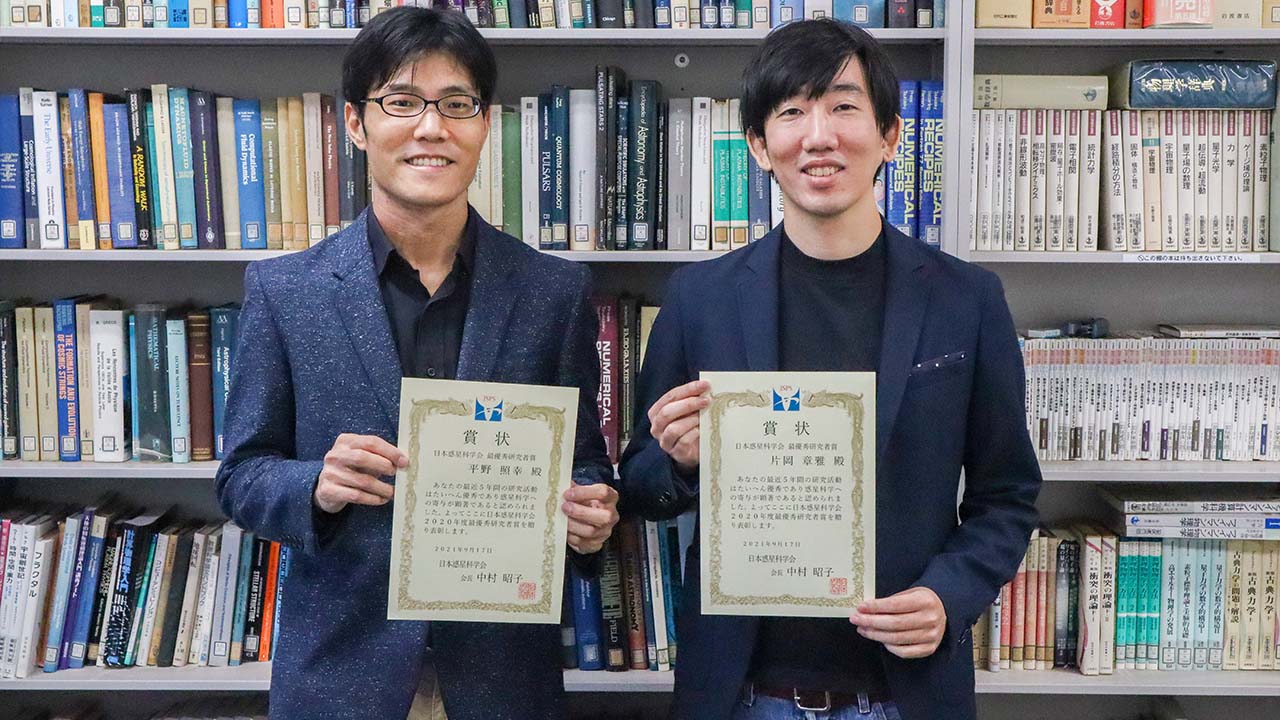NAOJ Scientists Win the ASJ Young Astronomer Award and the JSPS Outstanding Young Scientist Award
| Topics
Three NAOJ scientists have won the 2020 ASJ Young Astronomer Award, and one NAOJ scientist and one Astrobiology Center scientist have won the 2020 JSPS Outstanding Young Scientist Award.

The 2020 ASJ Young Astronomer Award went to Assistant Professor Akimasa Kataoka, Project Assistant Professor Kimihiko Nakajima, and Assistant Professor Takashi Moriya, all of whom are affiliated with the Division of Science of the National Astronomical Observatory of Japan (NAOJ). The award recognized Kataoka for his “theoretical and observational studies of dust growth in protoplanetary disks,” Nakajima for his “spectroscopic studies of the interstellar medium in distant galaxies,” and Moriya for his “studies of massive stars in the final phases of their evolution leading to supernova explosions.” The ASJ Young Astronomer Award, presented by the Astronomical Society of Japan (ASJ), is to commend young astronomers under the age of 36 who have made significant achievements in astronomy. This year’s winners were selected and announced in June 2021, and the award lectures were delivered online on September 15, 2021.

The winners of the 2020 JSPS Outstanding Young Scientist Award were Assistant Professor Akimasa Kataoka of the NAOJ Division of Science, who also received the 2020 ASJ Young Astronomer Award, and Assistant Professor Teruyuki Hirano, who is affiliated with both the National Institutes of Natural Science (NINS) Astrobiology Center and the NAOJ Subaru Telescope. Kataoka was recognized for his work proposing a new theoretical model for radio polarization in protoplanetary disks, and for detecting polarization with ALMA proving that dust grains are smaller than previously thought. Hirano was recognized for his contributions to the development of the Infrared Doppler (IRD) instrument for the Subaru Telescope, and to subsequent success with this instrument in obtaining new insights into the inclination of the orbit of a planet around a red dwarf star with respect to the stellar rotation axis. The JSPS Outstanding Young Scientist Award, established by the Japanese Society for Planetary Sciences (JSPS) in 2003, is to commend young scientists under the age of 35 with Ph.D. degrees for their excellent work. This year’s winners were announced in June 2021, and the award lectures were delivered online on September 17, 2021.
Inspired by these awards, everyone at NAOJ will continue working on the development of astronomy.
Related Links
- The ASJ Young Astronomer Award Recipients (The Astronomical Society of Japan)
- 2020 JSPS Outstanding Young Scientist Award Citation (The Japanese Society for Planetary Sciences, Japanese language only)
- Dr Akimasa Kataoka, Dr Kimihiko Nakajima, and Dr Takashi Moriya won the ASJ Young Astronomer Award of 2020 Astronomical Society of Japan (Division of Science)
- Dr Akimasa Kataoka won the Outstanding Young Scientist Award 2020 of the Japanese Society of Planetary Science (Division of Science)
- Assistant Professor Akimasa Kataoka wins the JSPS Outstanding Young Scientist Award 2020 (Center for Computational Astrophysics)